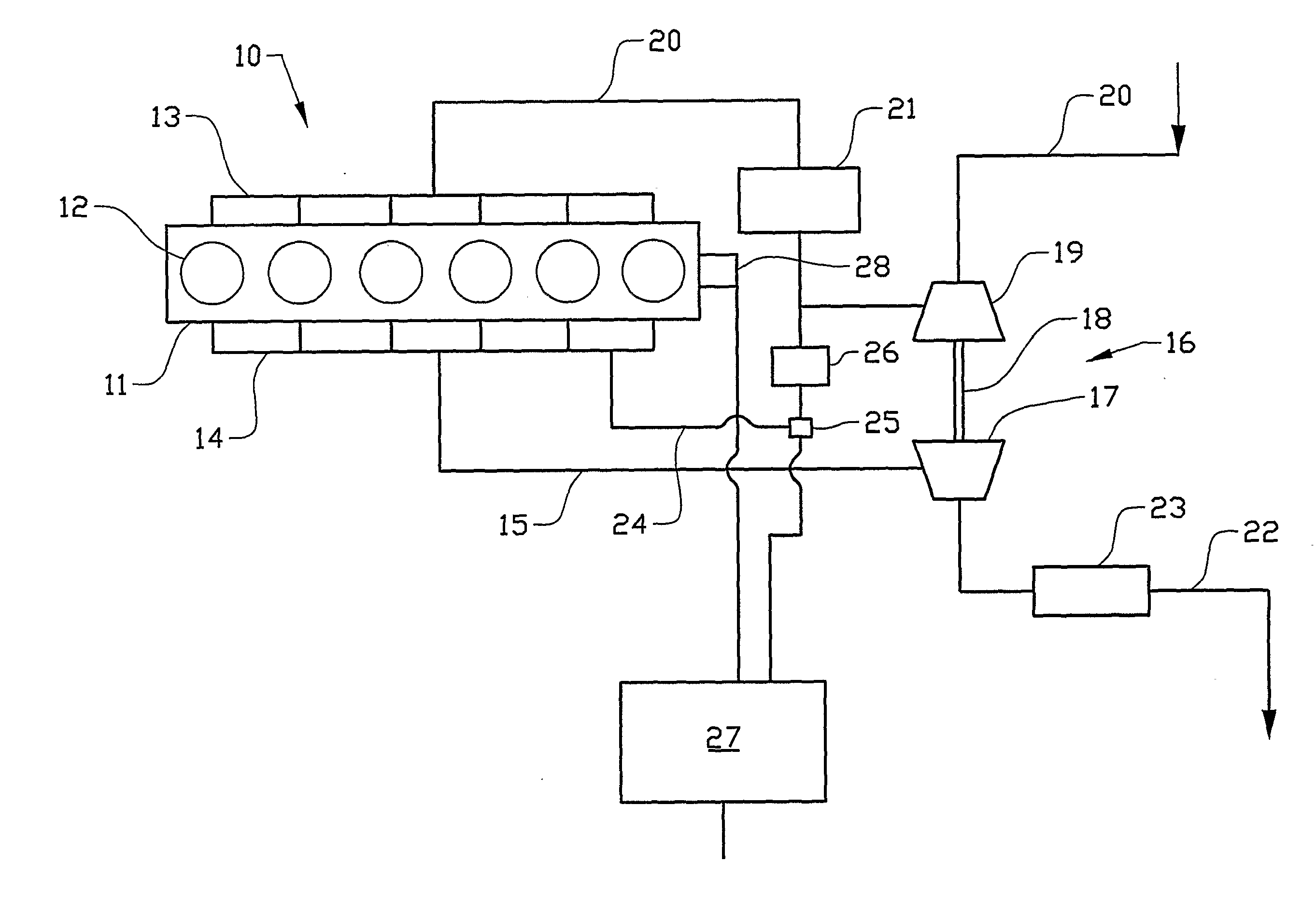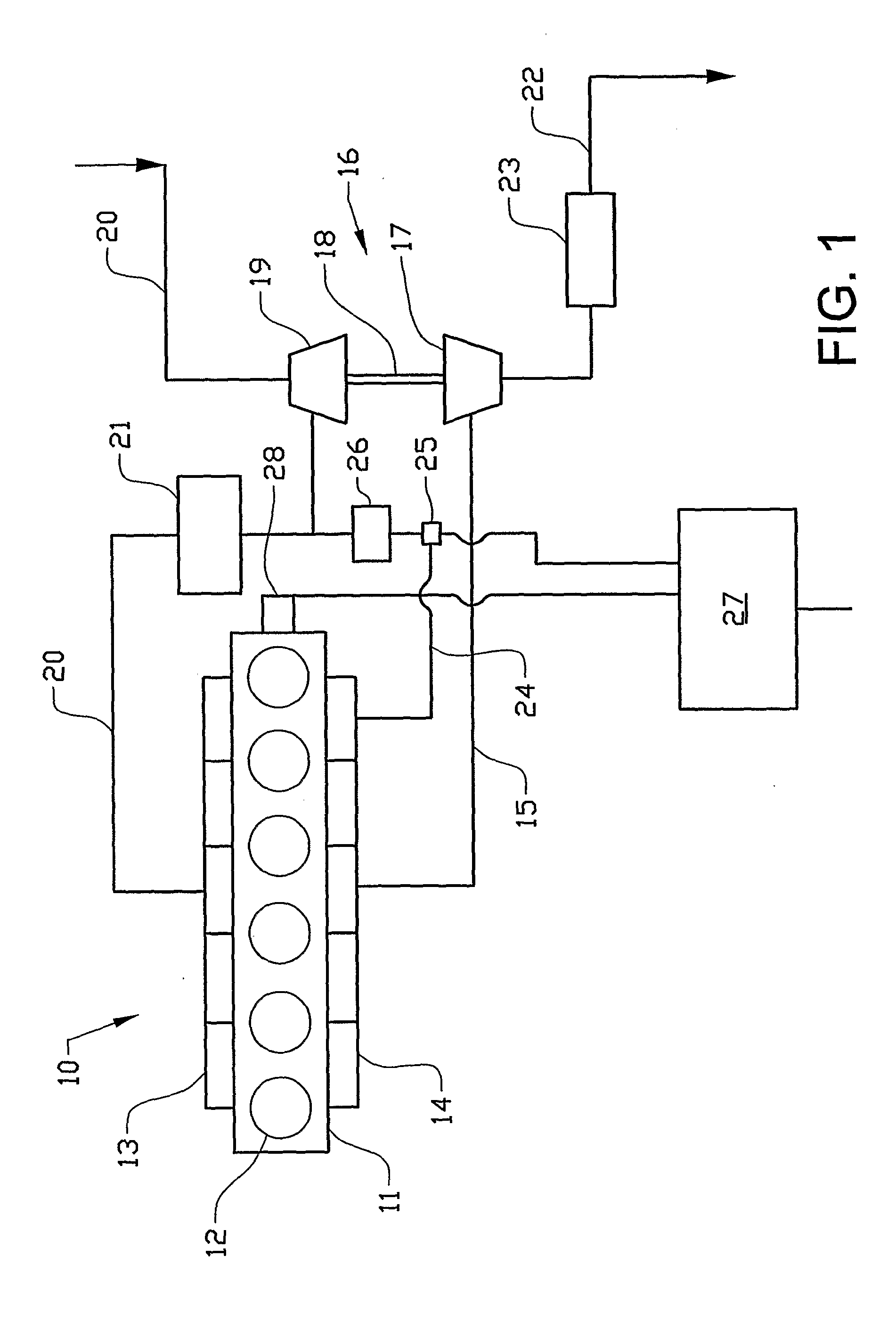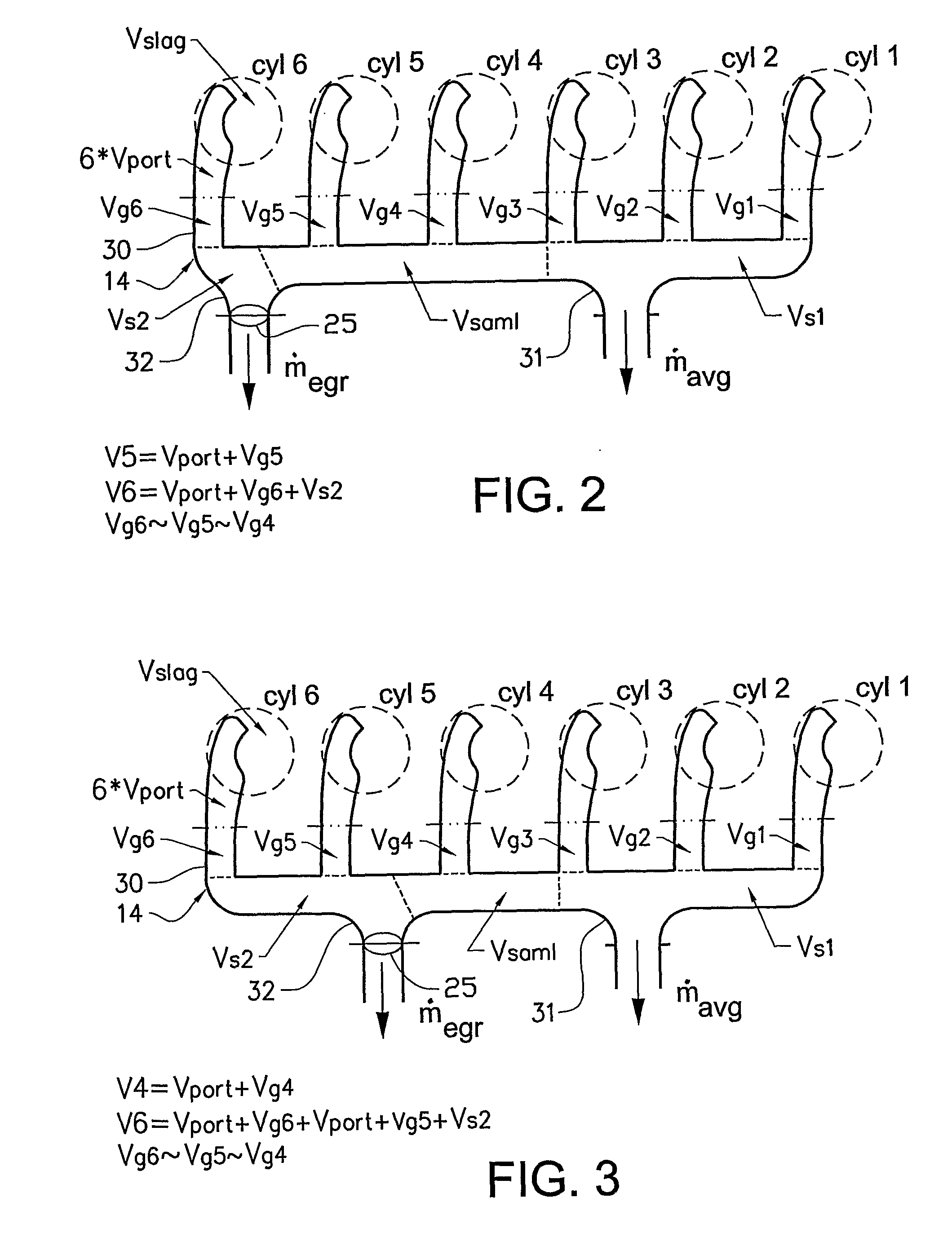Arrangement For Controlling Exhaust Pressure Pulses At An Internal Combustion Engine
a technology of exhaust pressure and combustion engine, which is applied in the direction of electric control, machines/engines, mechanical equipment, etc., can solve the problems of more or less constant active, entail complications, and process takes a relatively long time, so as to prevent the effect of adverse effects of fuel in the egr circuit, less manufacturing cost, and more space for installation
- Summary
- Abstract
- Description
- Claims
- Application Information
AI Technical Summary
Benefits of technology
Problems solved by technology
Method used
Image
Examples
Embodiment Construction
[0014]The combustion engine 10 schematically depicted in FIG. 1 comprises an engine block 11 with six piston-cylinders 12 with an inlet manifold 13 and an exhaust manifold 14. Exhaust gases are led via an exhaust passage 15 to the turbine wheel 17 of a turbo unit 16. The turbine shaft 18 drives the compressor wheel 19 of the turbo unit that compresses air coming in via an inlet passage 20 and passes it on via a charge air cooler 21 to the inlet manifold 13. Fuel is supplied to the respective cylinders 12 via (undepicted) injection devices.
[0015]Exhaust gases which have passed through the turbine unit 16 are led to the atmosphere via the exhaust line 22, which leads the exhaust gases through a regenerable device for exhaust post-treatment, e.g. a particle trap or NOx trap 23. Regeneration of the particle trap is effected by supply of unburnt fuel from any of the cylinders 12, e.g. by so-called “post-injection”, which by oxidation of the fuel in the catalyst upstream from the particle...
PUM
 Login to View More
Login to View More Abstract
Description
Claims
Application Information
 Login to View More
Login to View More - R&D
- Intellectual Property
- Life Sciences
- Materials
- Tech Scout
- Unparalleled Data Quality
- Higher Quality Content
- 60% Fewer Hallucinations
Browse by: Latest US Patents, China's latest patents, Technical Efficacy Thesaurus, Application Domain, Technology Topic, Popular Technical Reports.
© 2025 PatSnap. All rights reserved.Legal|Privacy policy|Modern Slavery Act Transparency Statement|Sitemap|About US| Contact US: help@patsnap.com



